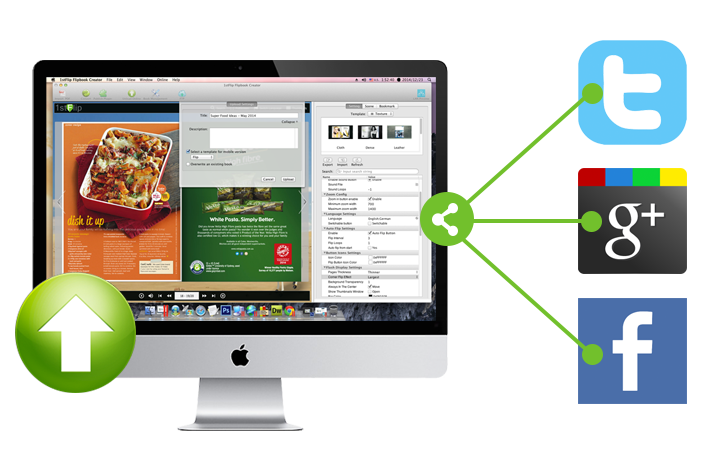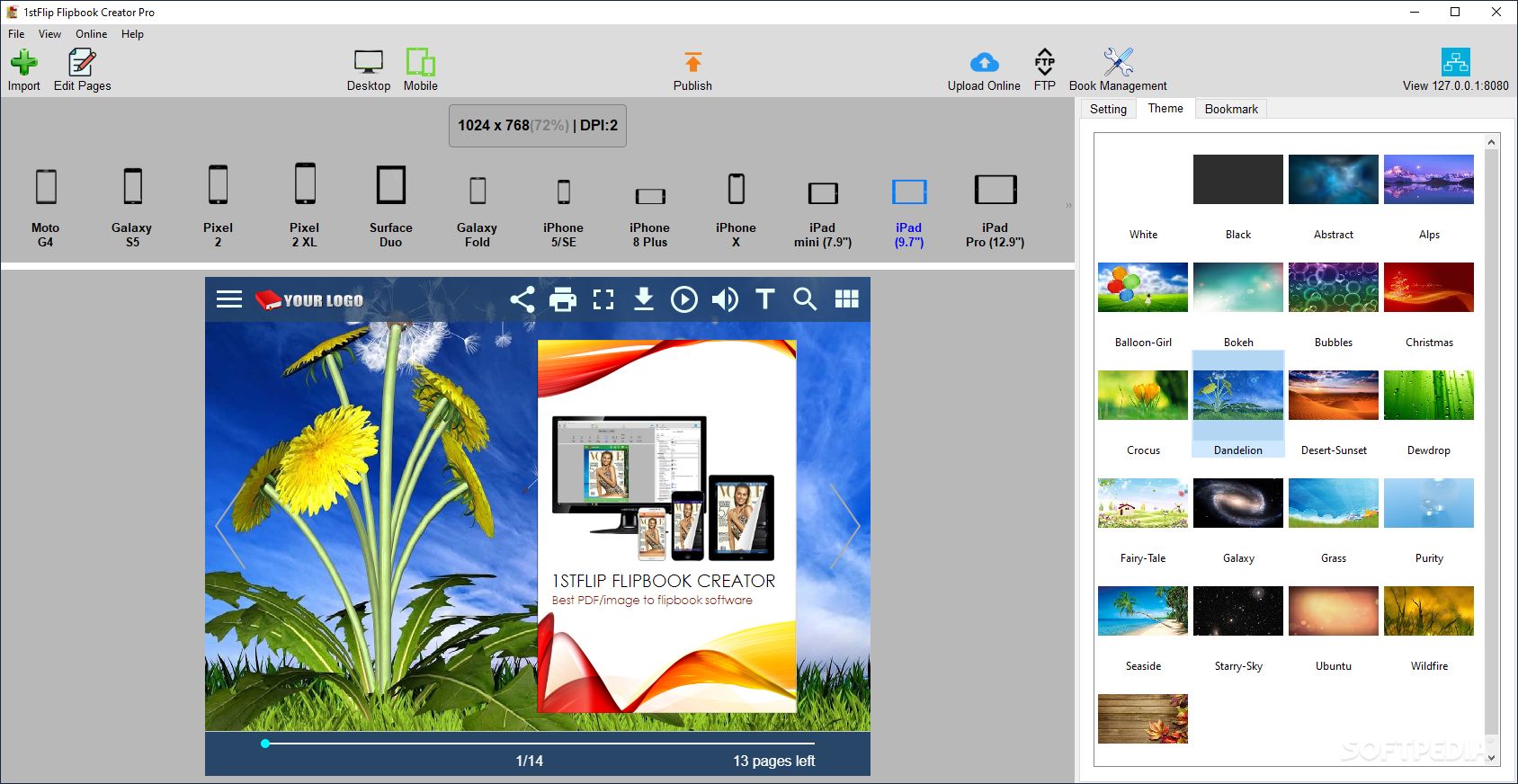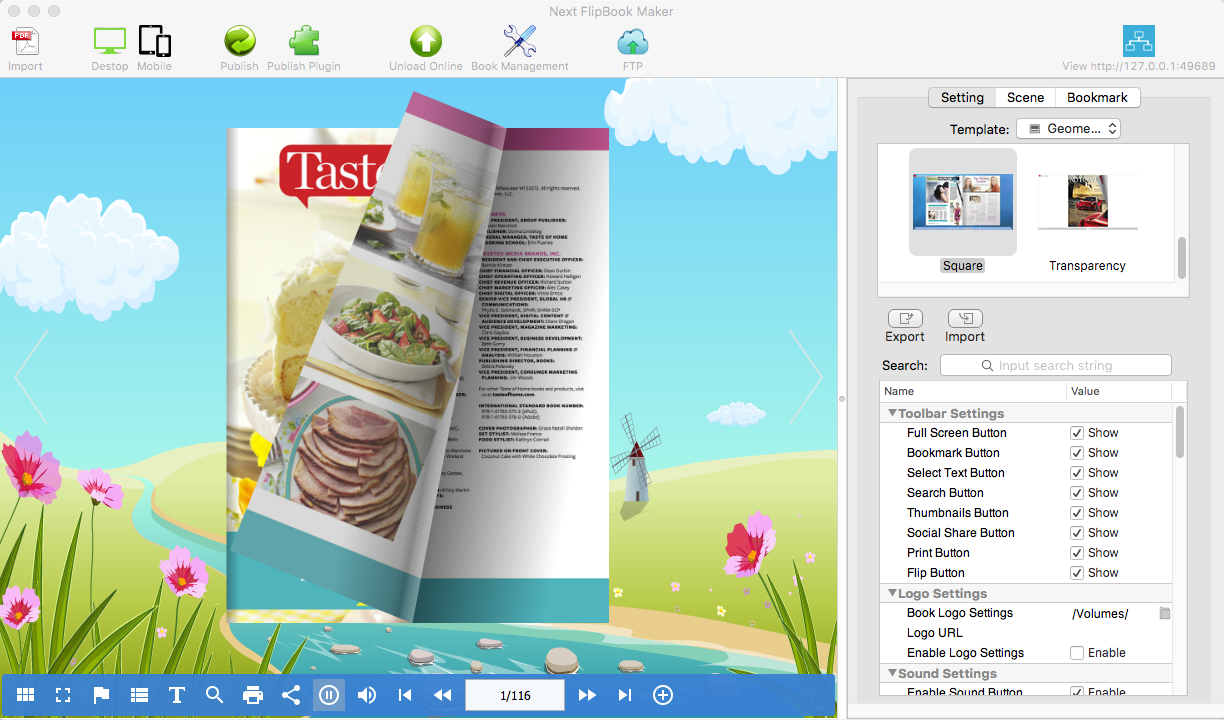
- Igoosoft flipbook creator manual#
- Igoosoft flipbook creator android#
- Igoosoft flipbook creator free#
Igoosoft flipbook creator android#
The apps below can be used either on Android or Apple iOS smart devices, or sometimes on both you can search for them in the Apple iTunes store or the Google Play store. In addition, there are numerous mobile-only or mobile-first apps which are appropriate for creating digital stories. TOOL TYPEĪ number of the tools listed above are available in mobile app versions.
Igoosoft flipbook creator manual#
Key tools for creating manual digital stories are shown in the table below. Any videos created from the digital stories can be shared online using videosharing services, or in LMSs or other institutional online spaces.
Igoosoft flipbook creator free#
Some are free to use others work on a freemium model where basic functionality is available for free, but users pay for more advanced functionality and still others are fully paid services. The tools themselves can be easily accessed on the web.

However, many digital stories created in this way could potentially be turned into automated digital stories in the form of videos, captured using screencast software. Such stories require users to interact with them, for example by clicking through from one section to the next, or opening photos, launching audio files and videos, and so on. Some tools can be used to create manual digital stories on laptop or desktop computers.

Educational Uses of Digital Storytelling (University of Houston, 2021).What is Digital Storytelling? (video) (U of G Library, 2019).Multimodal Stories for Language and Cultural Exchange (Grace Oakley & Mark Pegrum, 2017).

Show What You Know with Media (Wes Fryer, 2016 see also the image at the top of the page).Digital Storytelling (Langwitches, 2015 see also the sketch below).Digital Storytelling (Helen Barrett, 2011).Note that if students show their faces or reveal their identities in their digital stories, it may be advisable to share these only in password-protected online spaces whereas if students plan on sharing their work more widely, it may be appropriate to encourage them to disguise their identities (for example through the use of animated characters in place of photos or videos of themselves).įor useful educational ideas and resources, including examples of digital stories, see: The final products can be included in students’ PLEs or e-portfolios. There may also be an intercultural literacy aspect if digital storytelling is used in collaborative online international learning (COIL) or virtual exchange (VE) initiatives, where students interact and share work with peers from different parts of the world.

They offer an ideal opportunity for students to hone digital literacies such as multimodal literacy (in creating multimedia digital stories which communicate their messages effectively to their intended target audiences) and network literacy (in disseminating their own digital stories, and accessing and commenting on peers’ digital stories). Digital stories may be individually or collaboratively created, and may be static, dynamic or even interactive. In this way, digital storytelling is linked not only to web 2.0 learning but also to mobile learning.īecause of the way it draws together a range of language, literacy, presentation, and ICT skills, digital storytelling is becoming an increasingly common educational activity. Mobile devices like smartphones or tablets are frequently used to take the photos and make the audio or video recordings (see also the multimedia recording page) which are combined to make digital stories, with the creation of the final stories taking place either on the mobile devices themselves or on laptop or desktop computers. A digital story typically involves some combination of text, images, audio and/or video structured into a narrative.ĭigital storytelling, much like data visualisation, is not a tool as such, but rather a technique which can involve a whole variety of different web 2.0 tools and/or mobile apps. What do you want to create today? (Source: Wes Fryer,, under CC BY-NC-ND 3.0 licence)ĭigital storytelling involves creating multimodal, or multimedia, narratives.


 0 kommentar(er)
0 kommentar(er)
